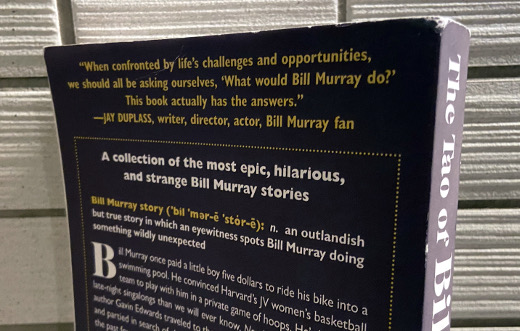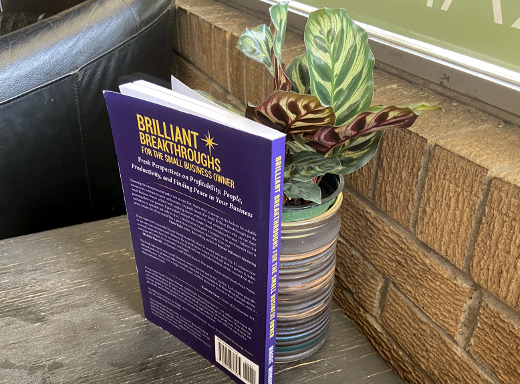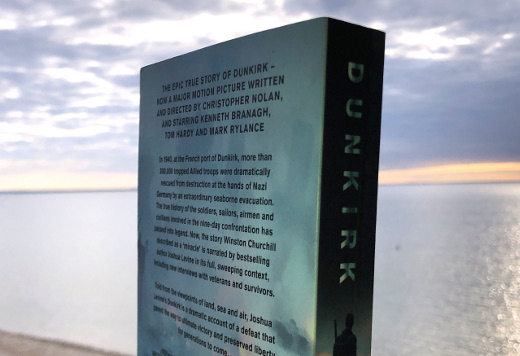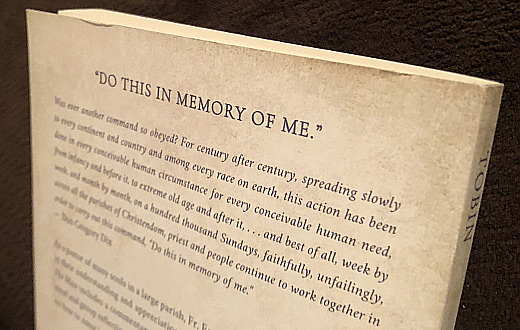My Takeaways From The Tao Of Bill Murray

Actor / improviser Bill Murray walks into a liquor store in Charleston, South Carolina. He grabs a bottle of liquor, opens it and takes a swig. He then grabs a cigarette lighter, ignites it and breathes into it, creating a fireball. He puts the lighter down, turns to the clerk and says, “nobody will believe you” and walks out of the store.
This story was told to me by a good friend who lives in Charleston. He has heard many stories about the star of stage and screen and has met him around the city Murray calls home. As unique as this story is in itself, it pales against some of the stories in the book The Tao of Bill Murray by Gavin Edwards.
The Tao of Bill Murray is a collection of stories like these, coupled with interviews of actors and common people who have interacted with Murray, including quotes from interviews with Murray himself. The long story short about Murray is he has done similar antics like what he did in the liquor store, everything from not taking pro golf tournaments seriously to crashing parties to not formally committing to being in a movie until he shows up on the first day of filming. Where by themselves these stories may seem peculiar for anyone else to do, especially to complete strangers, coming from the star of movies like Caddyshack and Stripes seems to make them acceptable not to mention welcome.
As I read the book, I laughed at Murray’s approach to the entertainment industry and wondered how I would react if Bill Murray jumped me and knocked me down in public. I also had a few takeaways from this light-hearted yet thought-provoking book.
Improv at its purest – Bill Murray studied improv at The Second City in Chicago and was on its main stage before his days on Saturday Night Live. His brother Brian Doyle-Murray also was at Second City and this has clearly had a profound impact on his life – trust me on this, as myself is someone who went thru the Intro to Improv program at the Second City Training Center and was part of a troupe that perform professionally, improv is something that remains with you. As I read through the variety of situations Murray was in or created, I saw many of these as true improv moments, where he was building and heightening and “yes, and”-ing his surroundings.
Only Bill Murray could do this – You don’t have to look far today to see some celebrity in the spotlight for doing something outside of the realm of common. Reading thru these stories and interviews, I realized many of these I heard of for the first time from this book. None of these I recall seeing in a supermarket tabloid or on some “news” Web site. Is Bill Murray still well-known enough but just under the radar of the gossip slingers to profit from?
Is there more to this? – In the back of my mind throughout reading this book I wondered to myself if there was more to this. Improv aside, is there something Bill Murray needs or wants that leads to these actions? I’m not saying he has an ulterior motive or something sinister is behind doing what he does, but is there simply more to it? The book didn’t quite address this.
The Tao of Bill Murray is a good read that is mixed with fun and celebrity. I was given this book by a good friend and avid reader of The Hot Iron, and I started reading it in Charleston when I was on vacation this summer. Now that I have finished it, I am sending it back to Charleston to a friend there who is likely on the lookout for this famous resident of The Holy City.
This is from The Hot Iron, a journal on business and technology by Mike Maddaloni.
Did you enjoy this? Subscribe to The Hot Iron by RSS/XML feed or Read by Email
Book Take-Aways • (2) Comments • PermalinkMy Takeaways From Brilliant Breakthroughs For The Small Business Owner Volume 4
After having run my own business, I learned that for as much of the advice you receive – invited or uninvited – by others, you really need to learn it the hard way in order for it to stick. This experience is priceless, though in some cases you can put a cost to it as you may have lost money in the process of learning it!
Brilliant Breakthroughs for the Small Business Owner Volume 4 is a chronicle of such advice. Each chapter is written by a different person or group of people, and offers hard-learned advice from those who lived to tell the tale. I bought the book as I know one of the authors, Mark Boeder. That being said, I wasn’t going into reading this book with any bias.
So some of you may be saying, why are you reading a book geared towards small business owners, as you aren’t one anymore? Even though I no longer have my own business and am no longer in consulting, I still approach my work as if I was still doing both. This approach has worked generally well for me over the years, and is why I have takeaways from the book. Here’s a few of the key ones that resonated with me the most.
Irreplaceable vs. Indispensable – In the chapter by Mark Boeder is the comparison of irreplaceable versus indispensable. He talks of employees who are irreplaceable are really ones who have positioned themselves to have retained certain knowledge to ensure they keep their job, where those who are indispensable will help you grow. Over the years I have seen both employees and consultants in both of these roles. The former hold their cards close to their chest and are protecting their turf. The latter are there to make you and your organization better, sharing their knowledge and wisdom, and as a result being more likely to be kept by said organization than the other. As you might guess, I strive to be indispensable.
Imposter Syndrome – This was a new term to be, however as I read Mike Raber’s chapter, it is something I was actually familiar with. Imposter syndrome is the sense you are a professional phony. In our society where job descriptions for some reason are supposed to match a candidate’s skills one-to-one, some may feel they are an imposter if their skills don’t match, and the delta to deeper knowledge is crossed with this feeling they are not genuine. “Fake it till you make it” is a common term on the other end of this spectrum. Over the years I have encountered many situations where I didn’t fully know what I was doing going into it. I would be honest about this and do my best – sometimes I was successful, and sometimes not so much. If someone else took the approach I do, I would never consider them an imposter.
Maslow’s Law of the Instrument – Many years ago I heard a quote from former US Army General Wesley Clark, where he said what I found in this book is Maslow’s Law of the Instrument, “... if the only tool you have is a hammer, to treat everything as if it were a nail.” In the chapter by Dennis Hill, he talks of integrating the various tools that are vital to the success and growth of a business. Where I am familiar with psychologist Abraham Maslow’s Hierarchy of Needs from my Management 101 class in college (and used it in figuring how to deal with various DJs on my college radio station!), I didn’t know he also is credited with this quote and concept. It is something I often think about when I pull myself back on a situation and look at it from the Big Picture, especially when what I am doing isn’t working as well as I would like.
Brilliant Breakthroughs for the Small Business Owner Volume 4 is part of a series of books where business advisors and consultants share their wisdom, as well as offer their services. Where there is a sales element to the book, the stories told are genuine and can be taken for what they are – good advice. Though there’s no shortage of such books, I recommend reading this one, as it made me think and introduced approaches to me that I hadn’t thought of before. As I giveaway all books I read, this one was placed in a Little Free Library in a high-profile location, one in which I saw other business books.
This is from The Hot Iron, a journal on business and technology by Mike Maddaloni.
Did you enjoy this? Subscribe to The Hot Iron by RSS/XML feed or Read by Email
Book Take-Aways • (0) Comments • PermalinkMy Takeaways From On Tyranny
Where definitions can vary, the word tyranny generally means the oppression of people by others, whether an individual, system or both. The oppressor is called a tyrant, and thus the relationship to the word. Tyranny was mentioned in the US Declaration of Independence twice in reference to the then King of England. In more modern times, Adolf Hitler has been aptly labeled a tyrant.
The book On Tyranny by Timothy Snyder, subtitled “Twenty Lessons From The Twentieth Century,” was recommended to me by a wise person. It digests the previous 100 years into things to consider and think about as we move through this current century. The book came out in 2017, and by tone and references, it talks to the politics of the US and world at that point in time, and one politician in particular.
As I read through On Tyranny, there were a lot of reminders for me, as well as a few takeaways.
Does history repeat itself? – I have heard this over and over and over throughout my life. Some have made catchy phrases around it, but the common theme centers around no matter what is done, outcomes to events are similar to those in the past. I pondered this one a lot as I was reading this book and once I was finished. I take away this – hindsight is 20/20, and when we’re in the midst of things we usually have no clue how something will be in the end. It is this end result that may seem like something that happened before, and could be, but the steps that lead to it likely weren’t exactly as previously acted out.
Be aware – The topics explored in On Tyranny were not completely new to me. As a self-described political geek from my school days in the 1980’s, I was the one who paid attention to the world around me, and well as around the corner. Today, I don’t believe these topics are taught in the schools (or taught well), and it’s up to parents to teach them to their kiddos, which I believe happens in my household to some success. If nothing else, we should all be aware of what’s happening, ask questions if we don’t understand it, don’t take everything for face value and make our own educated opinions.
Timing is everything – About half way through the book is the first mention of former US President Donald Trump. He is referred to again as both a candidate for the office and as the sitting president, however not by name. At the time there were accusations of foreign influence on his election and on him himself. Based on this, I assume Trump’s election may have been the primary or partial catalyst for the author writing this book?
Fast-forward 4 years, and there are similar accusations on current US President Joe Biden. Personally I think this book could have a greater reach if the Trump references were left out, allowing the reader to make their own conclusions based on their beliefs and educated opinions. As a non-partisan, I was able to see beyond politics and to the points made in the book.
On Tyranny is a small book that can fit in your hip pocket and a quick read at 128 pages. I enjoyed the book – again much of it was nothing new to me personally, but there was a lot I was glad to recall and a lot I agreed with. I recommend anyone to read this, from middle-schoolers on up, if for any reason to spark questions and conversations on the world today. My copy of the book is off to a colleague who was curious about it, who said he will read it in the morning one day.
This is from The Hot Iron, a journal on business and technology by Mike Maddaloni.
Did you enjoy this? Subscribe to The Hot Iron by RSS/XML feed or Read by Email
Book Take-Aways • (0) Comments • PermalinkMy Takeaways From The Book Dunkirk
For years I was familiar with what I remember as the “battle” of Dunkirk. Memories recall a battle and evacuation from the French city during World War II. To be completely honest, the main reason why I remember this at all is because I was born in Dunkirk, New York, which gets its name from the French city. An opportunity to truly learn what happened then and there would complete this connection.
Receiving the book Dunkirk: The History Behind the Major Motion Picture as a gift was very much welcome. A few pages into it I quickly learned this was not a book based on the movie, rather the story of what happened in Dunkirk, France in 1940 that was the basis for the movie. The author, Joshua Levine, was a historical advisor to the movie Dunkirk which was written and directed by Christopher Nolan and came out in 2017.
As you might guess, this book widened my eyes to the real story of what happened in Dunkirk and other related fronts of the war in Europe. Featured were many stories of what really was a rescue of thousands of British and some French troops from the beaches of Dunkirk. Where greater context of the overall state of the war was presented, the focus of this book – as well as the movie – is what happened on the ground in and around Dunkirk.
Where there are many lessons to be learned in wartime, I had a few specific takeaways from this book and the story it told.
Last Chance at First-Hand Accounts – The book was written about 5 years ago, just before 80th anniversary of the rescue at Dunkirk. Fortunately there were still some surviving soldiers and participants in the rescue effort alive who were able to tell their story. This added greatly to the stark reality of the war and the enormity of the rescue effort.
Newly Invented Degaussing Aided The Rescue – Degaussing is the process of removing a magnetic field, and is often referred to as demagnetizing or wiping. It was a relatively new process that came out of research during World War II, and played a great role in the rescue. Hundreds of ships were degaussed in order to reduce the chance of magnetic mines being drawn to them and blowing them up.
The Term “Dunkirk Spirit” Is Still Used Today – The term Dunkirk Spirit came from the effort of many to rally around the cause of rescuing the soldiers from the shores of the French city. I occasionally see the phrase in use today in reference to any collective of people rallying around a cause. It’s good to see that even today some good comes from the tragedy of war that led to the need for the rescue.
Dunkirk is a very well-written and engaging story on the rescue. At some points it is hard to follow all of the soldiers and military leaders, but I tried not to focus on individuals instead on the monstrous rescue effort. The book concludes with backstory on the production of the movie itself, from Nolan’s script and creation of characters and the challenges of recreating the rescue scenes. With an eye towards authenticity over computer-generated imagery, the level of effort to recreate some scenes was near equal to was done during the rescue itself. One such example was to create a “pier” out of military vehicles, which included sinking them into the water so soldiers could pass over them.
If you enjoy history or simply like stories of overcoming the odds, I highly recommend Dunkirk: The History Behind the Major Motion Picture. As I pass along all books I read, this one goes to my Father-in-law, a military veteran himself, who also enjoys such stories.
This is from The Hot Iron, a journal on business and technology by Mike Maddaloni.
Did you enjoy this? Subscribe to The Hot Iron by RSS/XML feed or Read by Email
Book Take-Aways • (0) Comments • PermalinkMy Takeaways From A Simple Explanation of the Mass
Have you ever done something repeatedly and it gets to the point that you do it without putting too much thought into it? This was the thinking I had when I picked up a copy of the book A Simple Explanation of the Mass at the end of a Mass I attended at my Catholic church.
As someone who embraces the term “practicing Catholic,” I certainly don’t pretend to be a religious scholar. That being said, I went through traditional religious education (aka CCD) as a youth, and I should already know everything in this book, right?
As I read through this short yet encompassing book, I had a few takeaways.
Reminded of the Smaller Details – From the origins of some prayers to some of the things the priest says in the course of the Mass that the congregation may not hear, there were several reminders or refreshers on some of the things that are important in a Mass but can be easily overlooked.
More than a Commentary – The subtitle of this book, by Catholic priest Fr. Eamon Tobin, is “A Step-by-Step Commentary on Each Part of the Mass and The Seasons of the Liturgical Year.” Where there is some opinion throughout the book, I say this is more of an explanation and guide to the Catholic Mass. Sports books I have read and shared takeaways from here at The Hot Iron tend to be more commentary than this work.
A Good Explanation and Guide – I was pleased with the format and flow of the book, first walking through the elements of the Mass from beginning to end, then the liturgical calendar for the Catholic Church. Where I of course learned all of this over my many years, I don’t recall it in such a well-structured format.
Whether you’re a Christmas and Easter Catholic or someone who is there every Sunday – or someplace in between as I am – you will find A Simple Explanation of the Mass a good read and refresher of what you, like me, may be taking for granted. As I pass along all books I read, I am going to drop this off in a new Little Free Library that is in my neighborhood. Perhaps this will shed some enlightenment on someone as it did for me.
This is from The Hot Iron, a journal on business and technology by Mike Maddaloni.
Did you enjoy this? Subscribe to The Hot Iron by RSS/XML feed or Read by Email
Book Take-Aways • (2) Comments • Permalink




